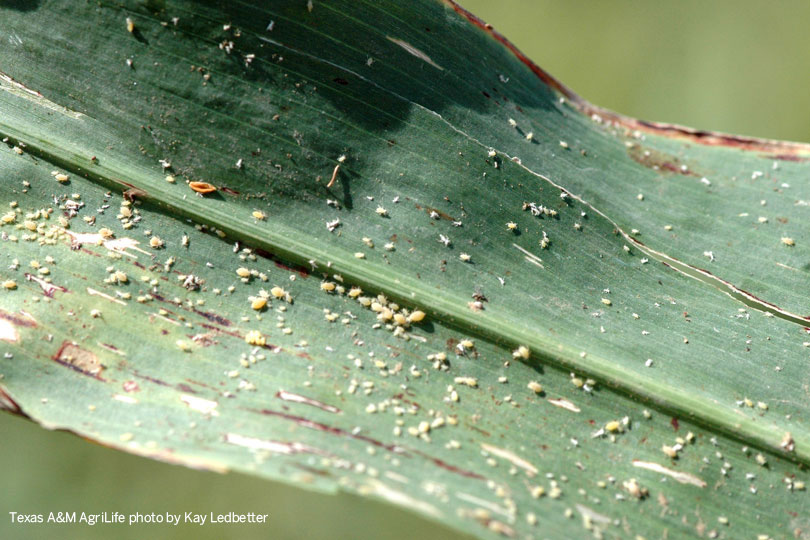By Jessica Domel
Multimedia Reporter
They may be tiny, but sugarcane aphids have dealt a heavy blow to the Rio Grande Valley and Texas economies. Since their first detection in Beaumont in 2013, sugarcane aphids have cost hundreds of millions of dollars, according to a new report from Texas A&M AgriLife Extension.
“We have been tracking the pest over the last four years. We found significant damage to farmers’ profits. We did the analysis in both the Rio Grande Valley, as well as South Texas. We found that in the Rio Grande Valley, on average, the sugarcane aphid caused a loss of about $65 per acre,” Dr. Samuel D. Zapata, one of the authors of The Economic Impact of the Sugarcane Aphid Outbreak in Texas, said in an interview with the Texas Farm Bureau Radio Network. “The reduction in profits is given by two things. First, a reduction in revenue because producers have lower yields. The other impact is on production costs mainly because now producers need to spend more money on insecticides and monitoring the pests.”
On average, annual economy-wide losses totaled 513 jobs and $169.83 million in economic output, including a direct loss of $78.57 million to farms and farm-related industries from 2014-2016, according to the report.
The losses don’t stop there.
An additional $10.02 million in output to other supporting industries was also lost, as was $101.3 million from farm households hit financially by the aphids.
Sugarcane aphids have a great dispersion capacity and reproduce rapidly. As they feed on the bottom side of grain sorghum leaves, they leave behind a clear, sugary honeydew that promotes growth of a black, sooty mold. The mold prohibits growth by blocking the plant’s ability to get the resources it needs, lowering yields.
The honeydew jams up combines and creates further yield losses for farmers.
The limited availability of effective insecticides also played a role as farmers struggled to control the aphids the first few years they were in Texas.
“We have found that since the first detection in 2013-2015, the damaged caused by the sugarcane aphids has decreased over time. It’s mainly associated due to weather conditions. The pests prefer hot weather and dry conditions,” Zapata said. “At the same time, farmers are aware of how to better control the pests and how to do the management strategies on time. That has helped a lot.”
To complete the new report, 57 growers representing 153 grain sorghum farms in the Rio Grande Valley and South Texas were surveyed.
They reported that, over time, it appears as though the severity of sugarcane aphids has increased, but active monitoring, effective hybrids and knowing when to spray have helped farmers better control the damage.
Zapata said sharing this information is one of the reasons a report like this one is important.
“One is to make farmers aware of the importance of following the recommendations. That’s why we are providing numbers so they know how much the expected loss is if they don’t do anything to prevent the pests,” Zapata said. “The other thing is on the industry level. When you put together an estimate of the total loss caused by these pests on the industry level, then you can use those numbers to justify the use of funds on research to develop a better management strategy, as well as supporting data for government programs.”
According to the report, the number of people using hybrids increased from 30 percent in 2014 to 50 percent in 2016 following the sugarcane aphid outbreak.
Sulfoxaflor 50% WG and flupyradifurone are listed as the most effective sprays for controlling the aphids.
“Based on scientific experiments, Texas A&M AgriLife has developed the threshold to spray for the pests. To the best of my knowledge, they’re not talking about 30-50 aphids per leaf,” Zapata said. “That’s when you need to start spraying for the pests. If you start spraying late, it’s very hard to control the pests.”
Monitoring for aphids and spraying in a timely manner has increased farmers’ costs, while many still deal with lower yields and revenue, but prevention has kept farmers from even greater losses that are possibl

